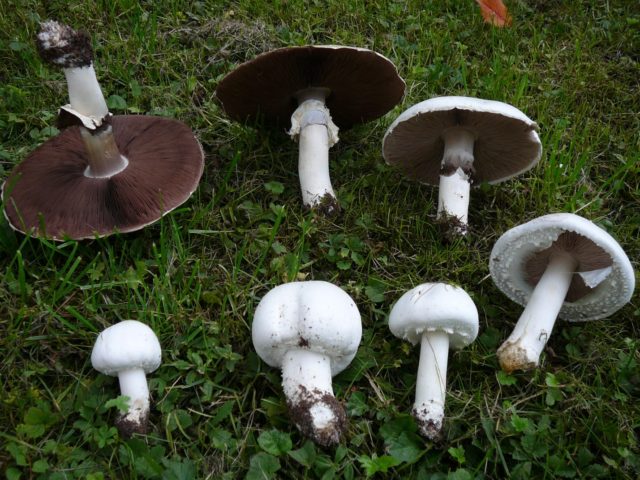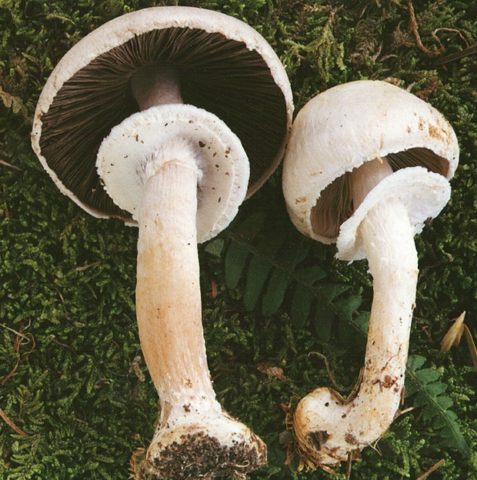Content
Champignon Esseta is a member of the Champignon family of the same genus. The mushroom has a number of distinctive features that should be familiarized with before harvesting.
What does Esseta champignon look like?
This is a species with a rounded white cap, which becomes convex-flat with age.

The plates are whitish, as they grow, they acquire a gray-pink, and later brown tint
The mushroom has a thin cylindrical pinkish stem with a torn ring below. It usually widens at the base.
Where does Esseta champignon grow?
The habitat of the fungus is coniferous thickets and spruce forests. It can sometimes be found in deciduous forests. The species grows on the forest floor and bears fruit actively from July to October.
Is it possible to eat champignon Esseta
Champignon Esset belongs to the edible group. It contains many useful elements:
- amino acids;
- vitamins of group B and D,
- nicotinic and pantothenic acids;
- biotin.
The species also contains a lot of protein that muscles need.
In addition, mushrooms have a mild diuretic property, lower sugar levels in the body, reduce the risk of atherosclerosis, and prevent the development of anemia and malignant tumors.
False doubles
The species has only edible counterparts, which is a huge advantage for harvesting.
Most often, the mushroom can be confused with the field mushroom, which differs in its place of growth: a false double can be found only in grassy areas. It is characterized by a hemispherical cap 5-15 cm in diameter and a strong, thick stem with a hanging two-layer ring. White pulp with anise aroma on the cut has a yellowish tint. Another distinctive feature is color.

The caps of adult field specimens droop and turn chocolate brown
Another twin of the species is a curve champignon with a cap diameter of 7 to 10 cm. Young specimens are bell-shaped, but become open as they grow. The fruiting bodies are cream colored with a yellowish tinge in some areas.

The leg of the species is 5-8 cm long, cylindrical in shape, even
Collection rules and use
The main nuance when collecting Asset mushrooms is the correct extraction of fruit bodies from the substrate. They cannot be cut off or abruptly pulled out, but only carefully unscrewed from the soil. So the mycelium remains intact and can continue to give fruit bodies.
This will allow you not to disrupt the growth of small mushrooms that have just begun to develop near a ripe specimen. That is why it is forbidden to cut the fruit bodies with a knife, the remains of hemp will interfere with the normal development of young mushrooms.
With a sharp pulling out of the ground, the mycelium dies almost immediately.
The twisted copies must be carefully trimmed and placed with their caps down in a box or basket, and then rearranged to a cool place (a cellar or refrigerator will do). Do not put a lot of mushrooms in one container - the fruiting bodies can choke and quickly deteriorate due to the high temperature.It is also important to provide the mushrooms with good ventilation. It is not recommended to store mushrooms for more than 10 days after picking, which is why the chefs order them in advance.
Asset mushrooms can be used in vegetable and meat dishes, they go well with cheese. Mushrooms are fried, boiled, stewed, and also baked over a fire in an oven.
Video recipe for making a quick snack:
Conclusion
Champignon Esseta is an edible mushroom that grows in coniferous, spruce and deciduous forests. Before going for a mushroom harvest, it is important to carefully study the description and photo of the species, as well as familiarize yourself with the rules for collecting fruit bodies. Asset mushrooms can be used in all types of culinary processing for preparing vegetables, meat and other dishes.








